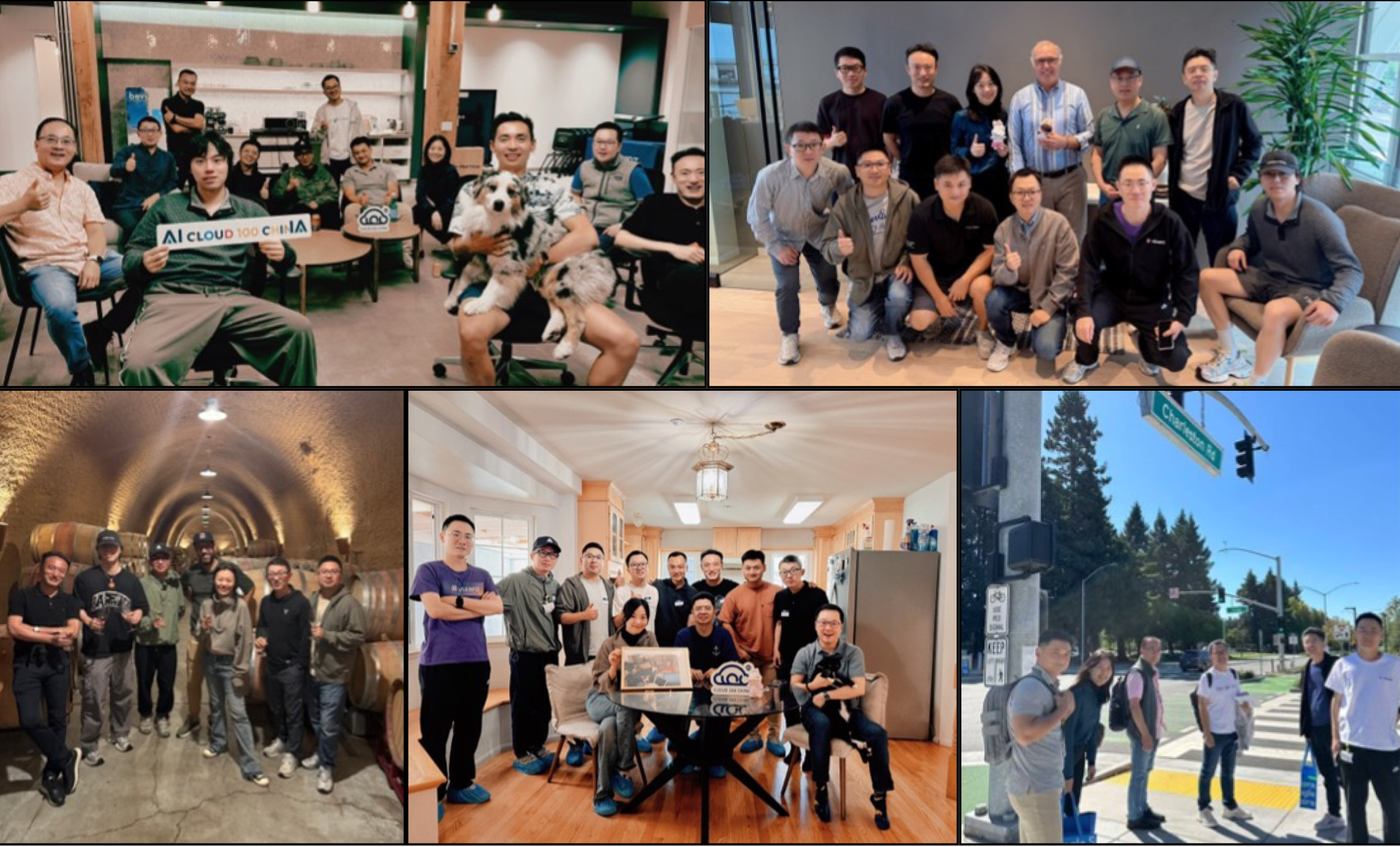In the last week of September, Eminence Ventures, together with Google Cloud, brought about 10 of our portfolio founders to Silicon Valley for the AI Cloud 100 China Go Global Workshop. Led by our founding managing partner Peter Cheng, the five-day journey spanned five Bay Area cities, with immersive visits to Google, Emergence Capital, AGI House, Facebook House, and a closing session at the iconic Byington Winery in the Santa Cruz Mountains. Each day ran from 9 AM to 9 PM, immersing the group in Silicon Valley’s entrepreneurial energy and first-hand lessons.
The program combined conversations, presentations, panels, evening gatherings, founder Q&As, and networking dinners into a packed agenda. Over five days, participants met with six breakout AI startups, five leading venture firms, and more than ten ecosystem partners—gaining a comprehensive, unfiltered view of the Valley’s AI landscape. As one founder put it:
“Eminence gave us a panoramic view of AI entrepreneurship in America—spanning founders, investors, and ecosystem partners. Combined with the emotional resonance among peers, the experience confirmed Silicon Valley as the undisputed hub for AI entrepreneurship and investment. The takeaways far exceeded expectations.”

Local founder experiences were at the center of our exchange. We invited six Silicon Valley’s dynamic AI entrepreneurs to share their journeys and hard-won insights:
We also stepped directly into the heart of Silicon Valley venture capital to understand how investors truly evaluate startups. At Google HQ, Ali Goldstein Norup, Head of VC & Startup Ecosystem for North America, outlined how investor expectations have shifted: “It’s not just about hitting $5M or $100M ARR—it’s about how fast you got there, and how defensible you are when you do.” Her advice to founders:
At the top-tier Silicon Valley VC firm Emergence Capital’s office at Pier 5, its General Partner Santi Subotovsky hosted our founders and addressed each of their questions. He emphasized that U.S. investors care less about short-term growth than about whether a company can continue to define its category five to ten years from now.
We also visited several leading seed funds active in Silicon Valley, including Basis Set Ventures, AGI House Ventures, CatchLight Capital, and Olive Technology Ventures. Throughout these conversations, one question surfaced again and again: “When are you moving here?” The consensus was clear: if a product is truly strong, financing will follow. What matters most is the founder’s willingness to fully relocate and commit to building in Silicon Valley.
Beyond capital and founders, Silicon Valley’s strength lies in its ecosystem. At AGI House, its founder Rocky Yu demonstrated how fellowships, early investment, and community-driven collaboration can accelerate founders’ growth. From Deel, a leading global HR platform that helps companies manage their international workforce, we learned from one of its earliest employees, Will Xue, not only about scaling from a YC startup to a 7,000-person global HR leader, but also about how international entrepreneurs can legally and compliantly navigate U.S. visa processes to launch their ventures in Silicon Valley. On the last day at Byington Winery, our private sessions focused on how Chinese founders can recruit top U.S. talent and accelerate B2B growth overseas.
It was a privilege to learn from and exchange thoughts with top minds in Silicon Valley. Looking ahead, Eminence Ventures will remain committed to building bridges, helping more Chinese AI founders scale globally, and shaping a truly global community of Chinese AI entrepreneurs.